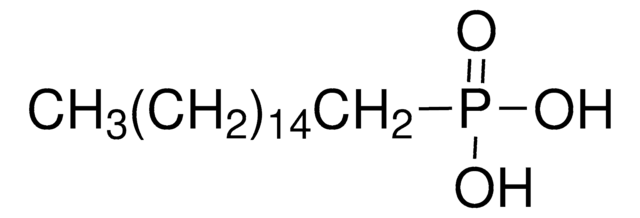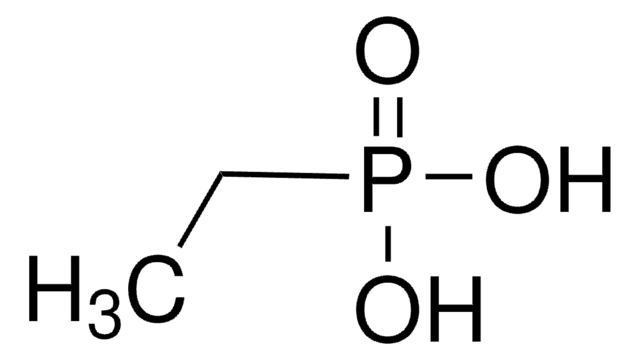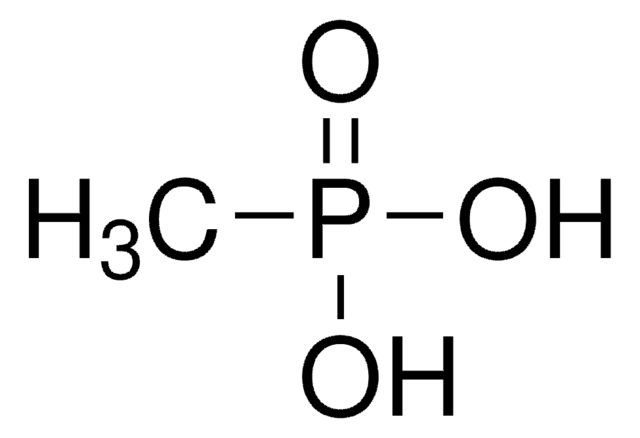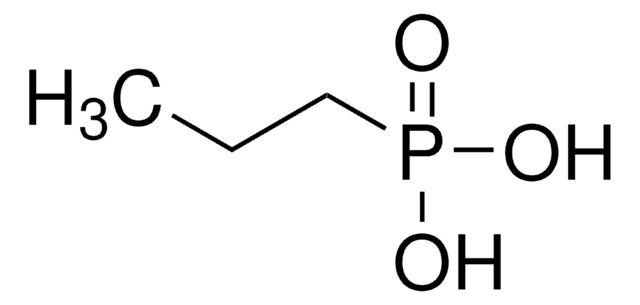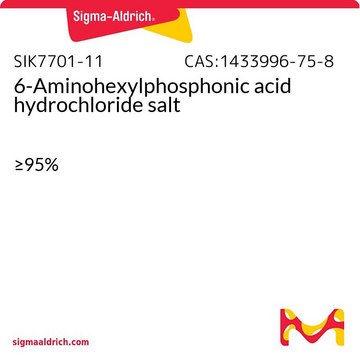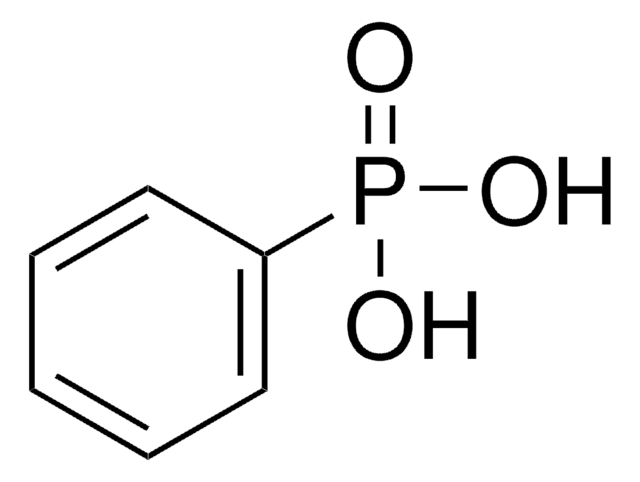750034
Hexylphosphonic acid
95%
Synonym(s):
n-Hexylphosphonic acid
About This Item
Recommended Products
Assay
95%
form
solid
mp
97-103 °C
SMILES string
CCCCCCP(O)(O)=O
InChI
1S/C6H15O3P/c1-2-3-4-5-6-10(7,8)9/h2-6H2,1H3,(H2,7,8,9)
InChI key
GJWAEWLHSDGBGG-UHFFFAOYSA-N
General description
Application
Signal Word
Warning
Hazard Statements
Precautionary Statements
Hazard Classifications
Eye Irrit. 2 - Skin Irrit. 2
Storage Class Code
11 - Combustible Solids
WGK
WGK 3
Choose from one of the most recent versions:
Already Own This Product?
Find documentation for the products that you have recently purchased in the Document Library.
Customers Also Viewed
Articles
There is widespread demand for thin, lightweight, and flexible electronic devices such as displays, sensors, actuators, and radio-frequency identification tags (RFIDs). Flexibility is necessary for scalability, portability, and mechanical robustness.
Our team of scientists has experience in all areas of research including Life Science, Material Science, Chemical Synthesis, Chromatography, Analytical and many others.
Contact Technical Service



